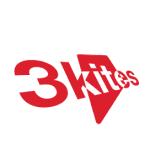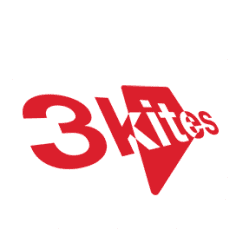Leveraging intranets as a knowledge management tool within the legal sector (part 2) – find out more with 3Kites
For many firms, their aim is to make their intranet the one-stop-shop for access to information. From a search perspective, the intranet can then act as a gateway to the firm’s search solution. In the past, it has been common for firms (especially larger ones) to adopt a wide enterprise search approach, where users can search for information across a large number of internal systems without having to leave what feels like the realm of their intranet. So, as well as the intranet libraries, the search engine would have indexed systems such as the firm’s website (for client-facing thought leadership content), the Client Relationship Management system (“CRM”) (for client details), the Practice Management System (“PMS”) (for matter details), the entire Document Management System (“DMS”) (for matter documents) and in some cases, certain external subscription platforms the firm would have been signed up to, like Practical Law (for research materials/template forms).
However, many firms have come to realise that having such a wide search scope has made it hard for users to find what they are looking for. Users are often left overwhelmed and sifting through excessive amounts of irrelevant and poorly maintained results. Because of this, firms are starting to trim down the scope of their search solution to focus more on knowledge-related content (e.g. people/expertise searches (“know-who”), curated knowledge banks, intranet libraries) and then directing users to relevant systems for broader searches (e.g. the DMS to search for matter documents) separately. However, this knowledge-focused search still requires some careful consideration to avoid falling into similar pitfalls of the broader enterprise approach and to ensure users can easily find the knowledge they are searching for, or quickly establish there is no relevant knowledge in that system.
Identifying your scope
Clarity of the scope of your search solution is probably one of the first things to consider here. As suggested earlier, there is now a general tendency to focus on allowing users to search for know-how, people, and intranet-related content (e.g., departmental guides). So, from a scope perspective, that means indexing information from the Knowledge Bank, HR systems, and the intranet. However, some firms go beyond this and provide additional functionality, such as the ability to search for basic client and matter data, expanding the indexing requirements to include PMS data. The landscape of knowledge can be quite wide and the context in which knowledge sits is often important to enable the user to understand whether it is useful to answer their query, so it is important to take the time to capture user requirements and understand from them what questions they are trying to answer and so what the scope of the search solution should be.
What goes where?
Another important consideration is an awareness of “what goes where”. For an effective search solution that allows for effective knowledge sharing, it is crucial that the firm’s knowledge (legal and non-legal) is stored in the right places. So, for example, if you have a dedicated knowledge bank, then the firm should have people and system processes in place to ensure that your legal know-how content is being stored there and not in other siloed storage locations (e.g. local drives, personal know-how folders or in hard copy in cupboards!). The same would apply to precedent documents being stored in a precedent bank, closing binders in your electronic closing binder library, training materials in your Learning Management System (“LMS”). The list goes on.
Having clarity on where the firm’s knowledge is stored will help ensure you know where to point your search engine when looking for the source of truth, where knowledge team personnel will focus their curation efforts and where to direct users for knowledge content that is outside the scope of your search solution (e.g. LMS for training material). It is also increasingly important to consider how the use of products like Microsoft Teams is being used for knowledge-sharing so that that does not become another unconnected silo of information.
Content maintenance
With your knowledge content in the right places, for an effective search solution, it is imperative that the content is well maintained in its respective source systems. The users need to trust the content.
In my last article, I touched on the importance of adopting a Content Lifecycle Management (“CLM”) process. It helps ensure your firm’s knowledge content is up-to-date, accurate and meets the needs of your audience. CLM activities, such as ensuring the legal know-how within your knowledge bank is correctly tagged to your chosen taxonomy and regularly reviewed/purged for relevancy, will make searching for such content via the intranet’s search solution easier for your users.
Look and feel
The functionality and layout of your search solution is a huge contributing factor to the success of search and should not be ignored. If the layout of the search results is too confusing or carrying out simple search-related tasks (e.g. applying filters) is too cumbersome, then it will result in your users turning to other means to find their legal knowledge, or missing out on useful content.
From my experience, when it comes to the information displayed and functionality available on your search solution, it is very much a case of quality over quantity. There is always that risk of including too much metadata and functionality on the screen in a bid to cater for the vast number of requirements captured for your search solution. However, it is important to remember that some of those requirements may be quite niche and only satisfy a small specialist cohort of users. So, to avoid a cluttered and overbearing layout, I would always advocate for a simpler, minimalist design where only the core information and widely used features are made available. Take filters, for example. As opposed to displaying every possible filter, you should instead use data to identify what tags are mostly used on content to then determine what filters will be useful to most users.
There is also growing expectation amongst intranet users for the site to be made available on their work mobile devices. So most firms are pushing for responsive sites. This is another reason why you should keep the design of your search pages simple and easy to use, as this would mean it’s more suited for the reduced real estate inherent with mobile screens.
An article in this space would not be complete without a reference to the rise of generative AI! We are aware of firms exploring the use of natural language model overlayers on their search systems to allow users to more easily formulate their search queries without the headache of using all the cumbersome filters which users often hate. So a user may be able to type in a question such as “Find me an underwriting agreement from an IPO in the renewable energy sector drafted in the last six months” which may make the search system feel more accessible. Of course, the success of these ideas depends on the hard yards of work being done by knowledge management teams to ensure the underlying data is structured/tagged with consistent taxonomy terms/naming conventions and is stored in systems the tool can crawl. But if it means that content is more accessible to users and search systems are more frequently used, this will be an area to watch as it develops.
Hopefully, this article has given you some food for thought on what to consider when adopting a knowledge search solution. If you would like information about how 3Kites Consulting can help you in any of these areas, please get in touch.



